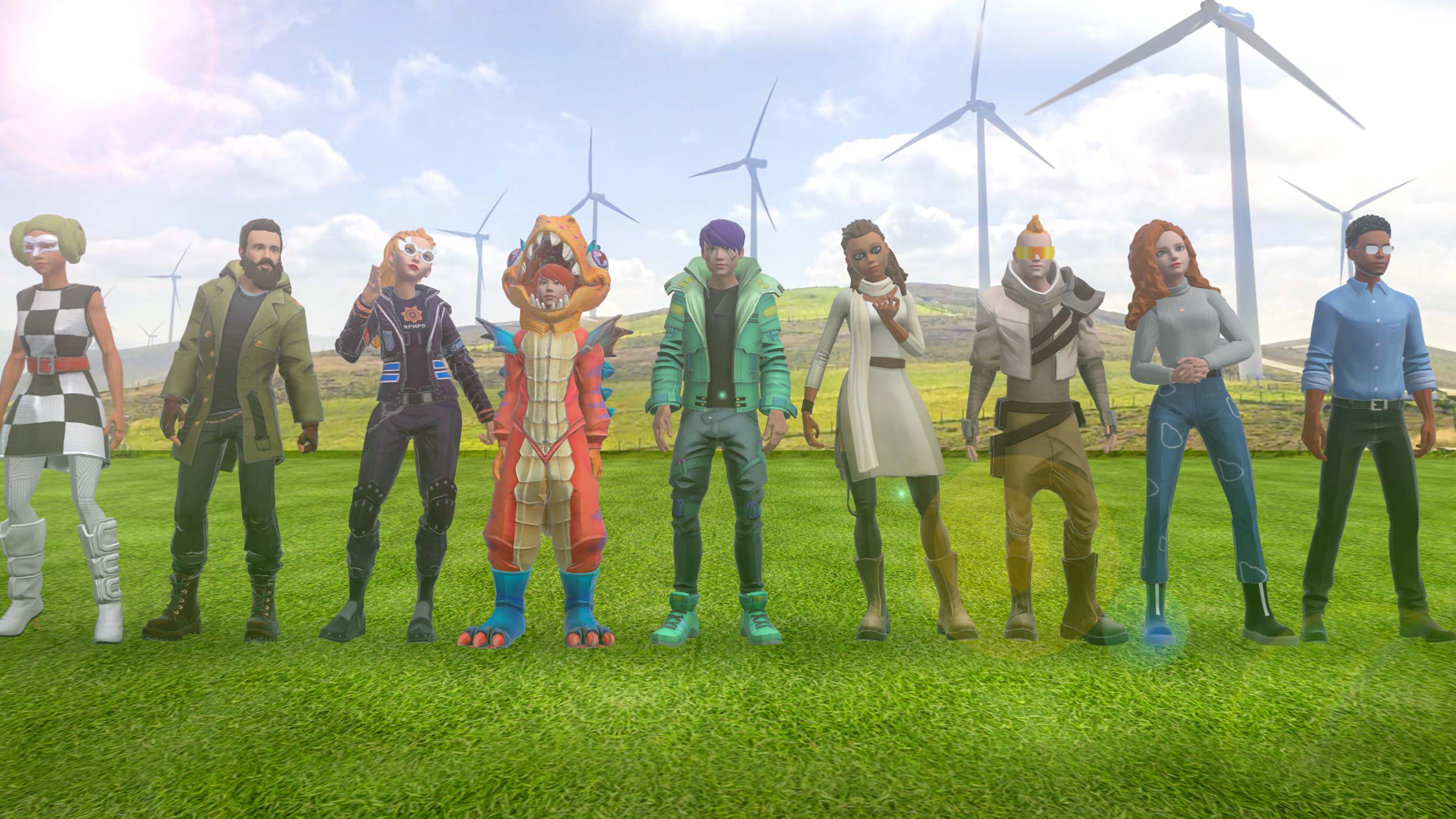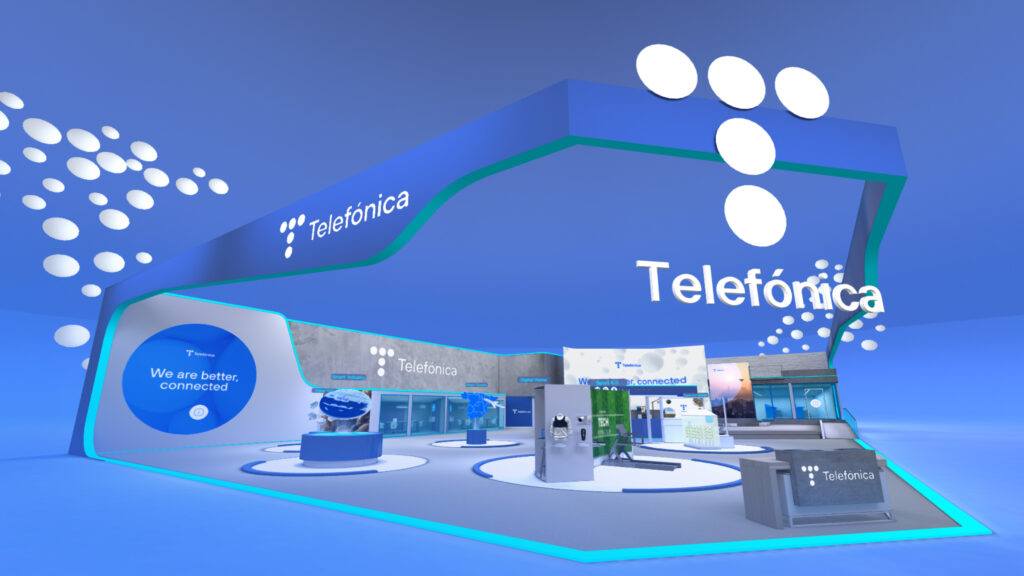What is a Virtual Event?
A Virtual Event is a massive online meeting organized as part of a space custom-designed, in which users have the freedom to move around the booth, trade show or virtual world via their own personalized avatars. New innovations that have a common goal: to humanize these new online experiences. All so that attendees can interact with the rest of the participants, from the different interactive points and from the total immersion in the virtual environment.
Virtual Events have great functionalities that can be adapted to all kinds of situations: from the live video streaming and the development of quizzes and challenges that gamify the experience up to the personalization of avatars/visitors through which interact, speak y sharing emotions with the rest of the users through gestures and animations. Everything to immerse us in a unique experience y virtual which gives the feeling of greater immersion than a simple group video call.
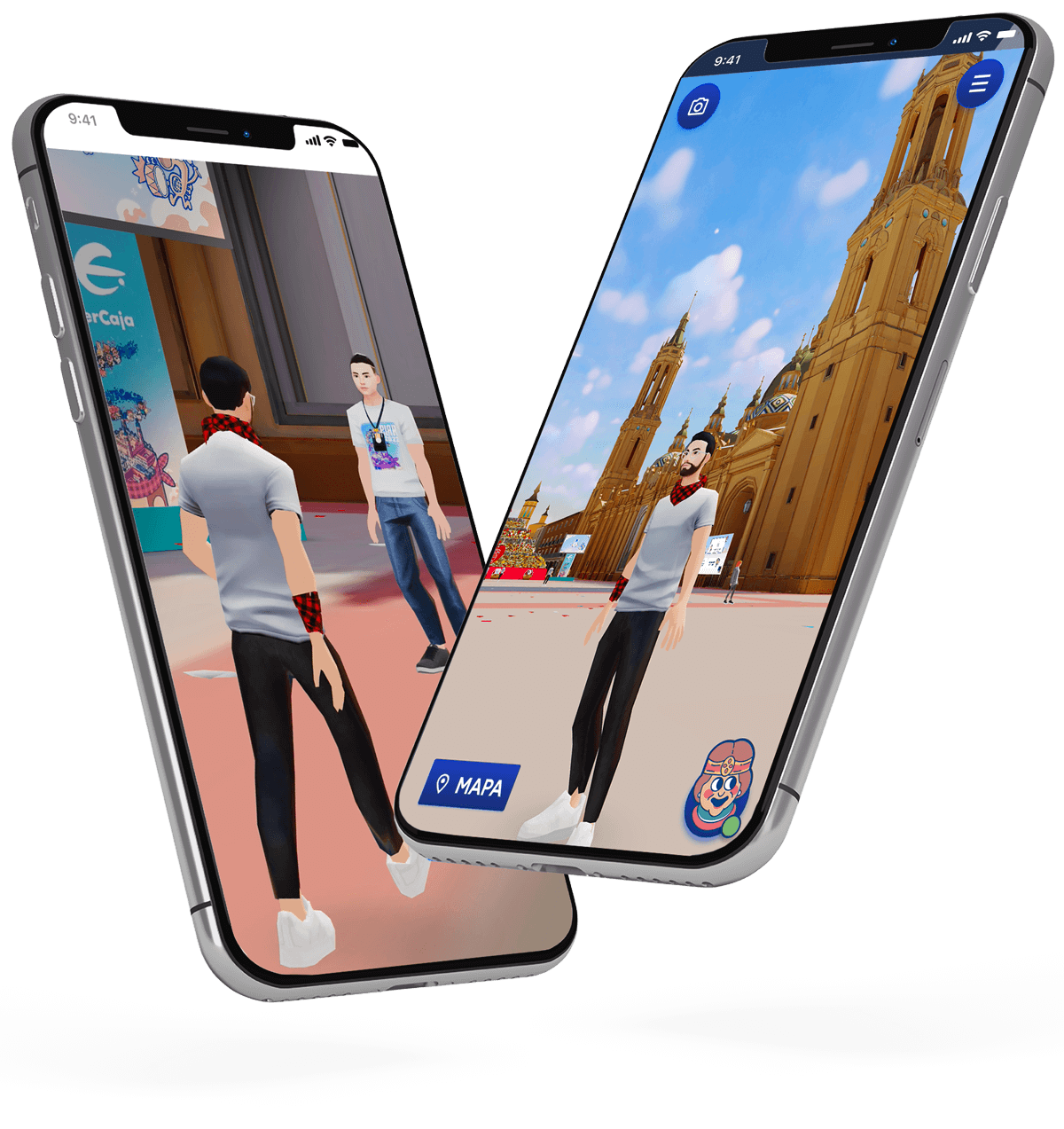
Examples of projects based on Virtual Events
Virtual Event Applications
Application in the business sector
The incorporation of the Virtual Events revolutionize the communication e interaction of companies with customers and employees. This makes it possible for hundreds of users from any device and any point on the planet to enter the virtual world of the company to enjoy the activities proposed during the event: showrooms of all services, 3D models of the latest products, networking areas and virtual auditoriums with live video streaming. Virtual events that also allow record the movements of all attendees who visit the stand at their own pace and without distractions. Providing the organizing companies with valuable data for their subsequent analysis. An example of this type of event can be found in the virtual booth from Telefónica for the Mobile World Congresswhere attendees who could not come to Barcelona enjoyed the same content in an immersive online format.
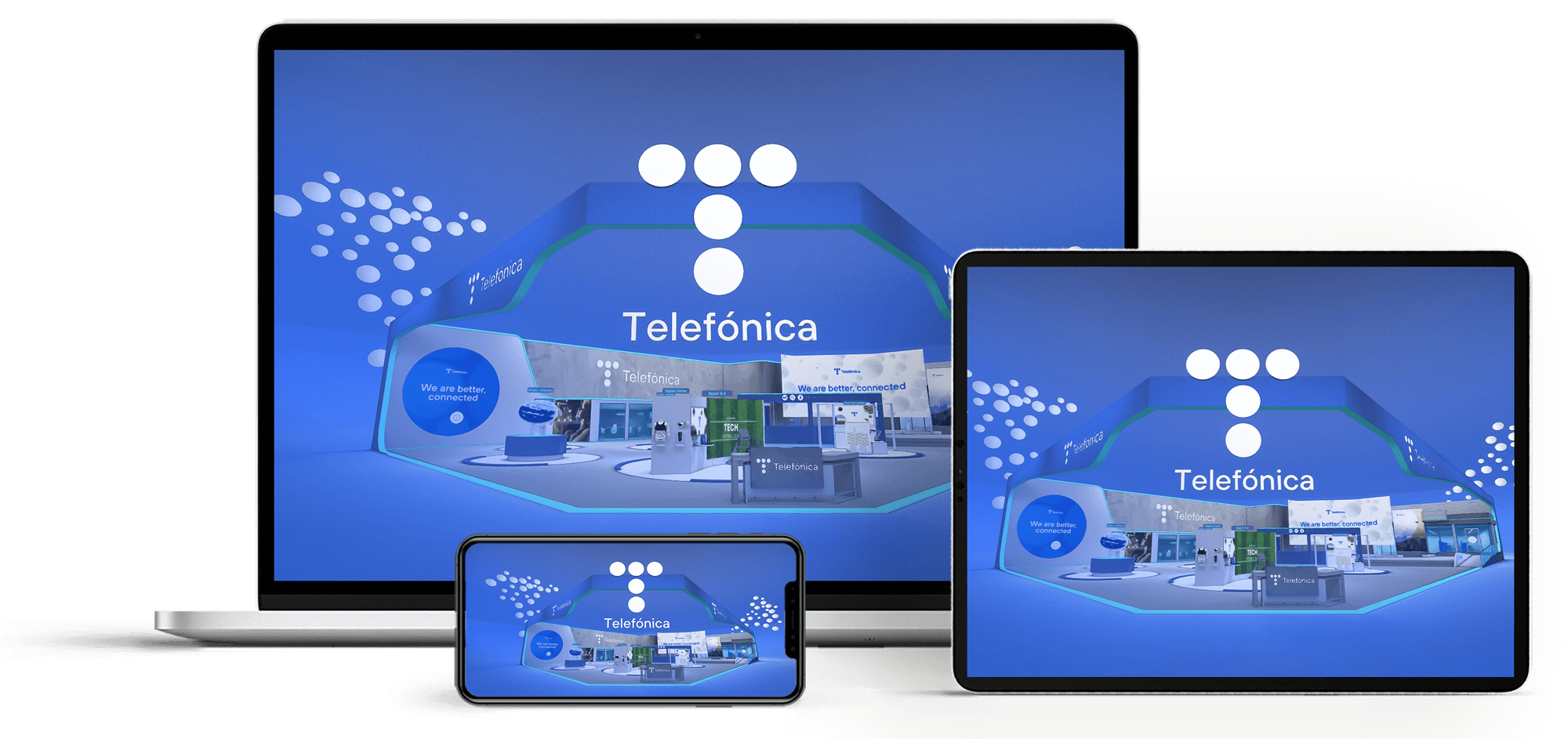
2. Application in the health sector
The implementation of the Virtual Events in the field of health geographical barriers are no longer an impediment to the development of the dissemination of the latest findings among professionals. It also allowed the event to be maintain over timeThe virtual space can be re-entered whenever the healthcare professional so desires by means of his or her credentials. In this type of event, professionals not only attend the meeting virtually, but they can also actively participate through voice and chat, interacting with avatars of the rest of the attendees, study all the 3D models shared in the meeting and consult all the complementary material in the same space. Virtual Events that can be developed as a congress 3D such as the one organized by Royal Canin for the presentation of the latest innovations of their respective departments.
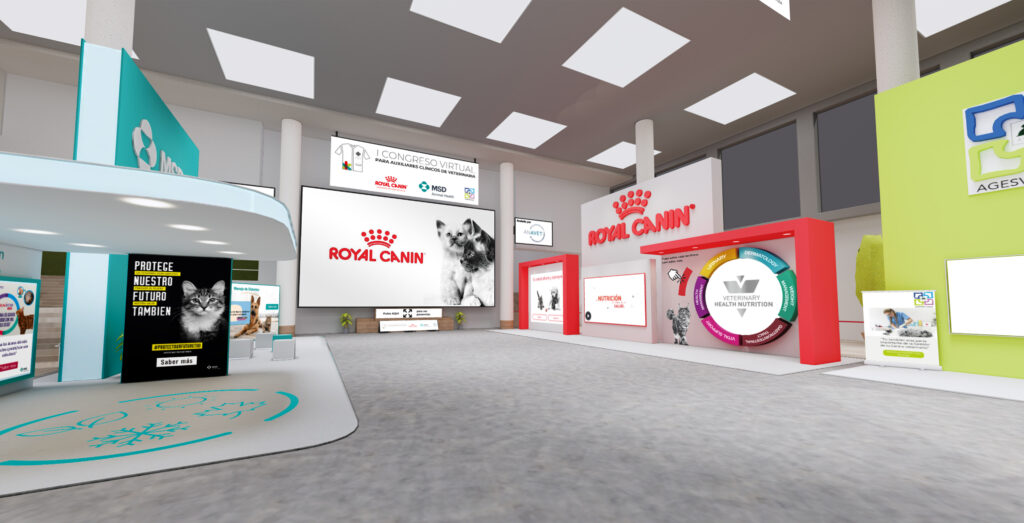
3. Applications in the educational sector
Today, thanks to the online trainings education is more accessible than ever. Not only thanks to online classes, but also thanks to the educational events that bring together experts and interested parties in the same 3D space where they can share and discuss a wide variety of topics. Allowing users to attend the different presentations at their own pace, interact and converse by voice and chat with the rest of the attendees, recognizable thanks to their personalized avatars, and consolidate everything they have learned with the quizzes and gamified challenges distributed throughout the space. An interactive and enjoyable way to attend educational events, as in the European Researchers' Nightwhere in a 3D recreation of the Paraninfo Hall of the University of Zaragoza The attendees were able to learn in detail about the progress made in the investigations.
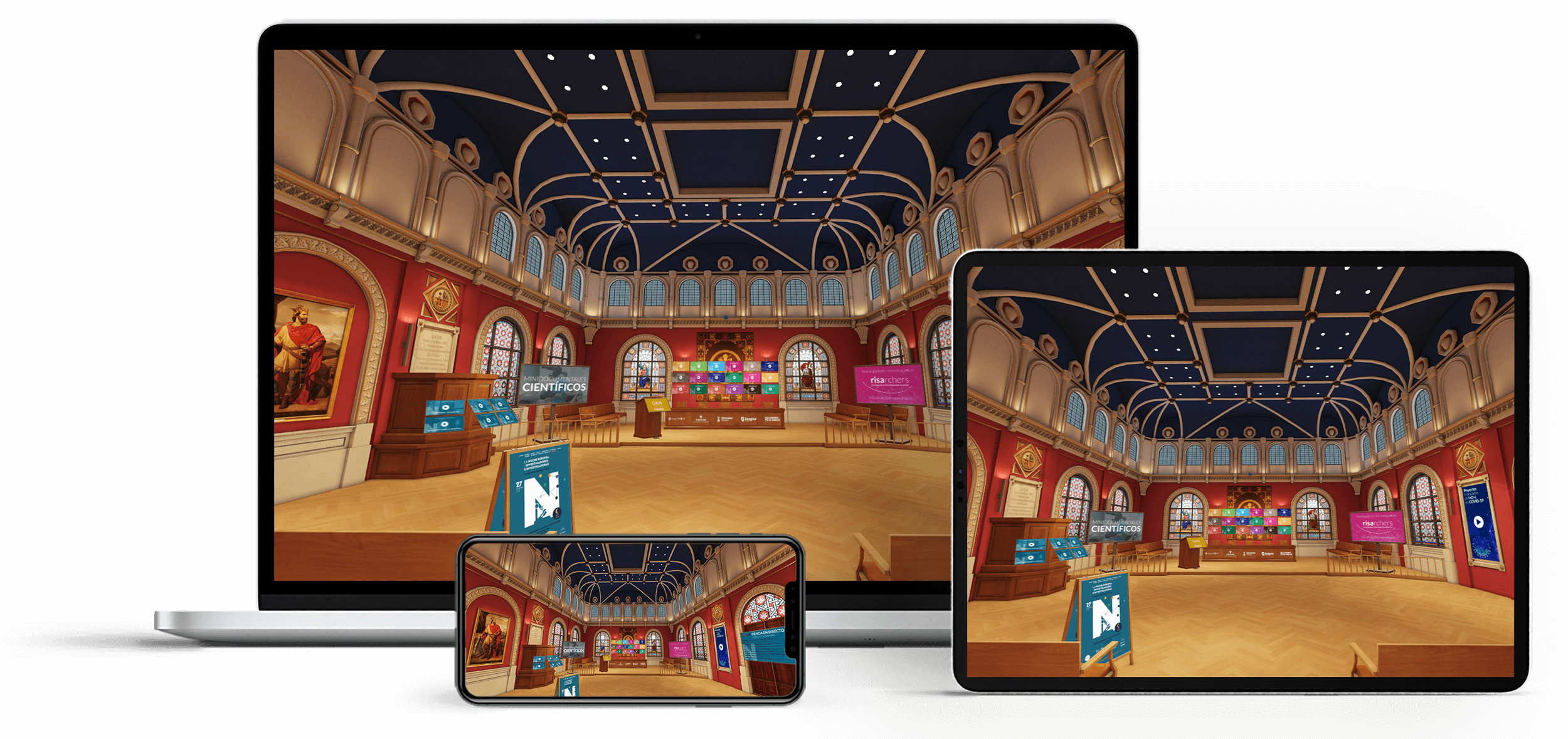
4. Entertainment applications
In the virtual world, our way of thinking changes socialize and above all of enjoy of our free timeThe company is looking for more innovative, attractive and different experiences. Three key points that form the basis of the Virtual Events entertainment sector, where promotions and premieres are becoming true 3D video games. Events to attend large concerts from the comfort of our homes, to discover all the series and movie premieres entering their own worlds of fantasy and science fiction or, as at the launch event of the NFTs of Ferran Adriàenjoy an interactive virtual museum in a paradisiacal landscape.
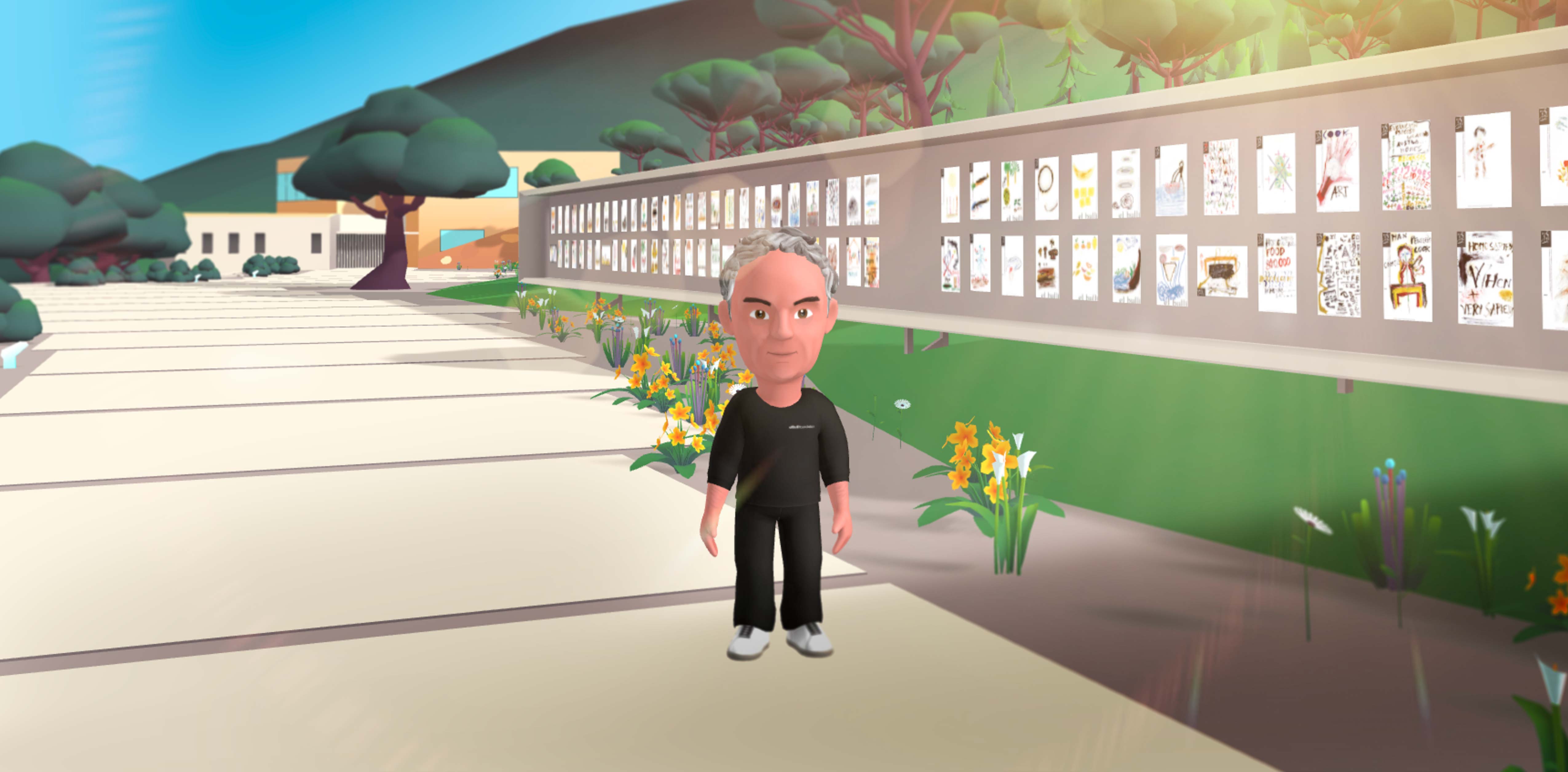
5. Applications in the cultural and tourism sector
New immersive technologies combined with the culture y tradition can completely transform the way we live and share our lives. cultural events y tourist. Being able to recreate monuments, cities and even traditional festivals in three dimensions where users from all over the world can get to know and immerse themselves in this playful environment. A unique way to bring local culture closer to virtual visitors, promote tourist attractions and bring tradition and folklore to the new generations in its own digital ecosystem. If there is a project that represents the potential of the virtual cultural events is the 3D recreation of the traditional Flower Offeringthe most important act of the Pilar festivities in Zaragoza. A Virtual Event and tourist action that has been a great success, reaching 32,000,000 million people and more than 350,000 unique users in its two editions.
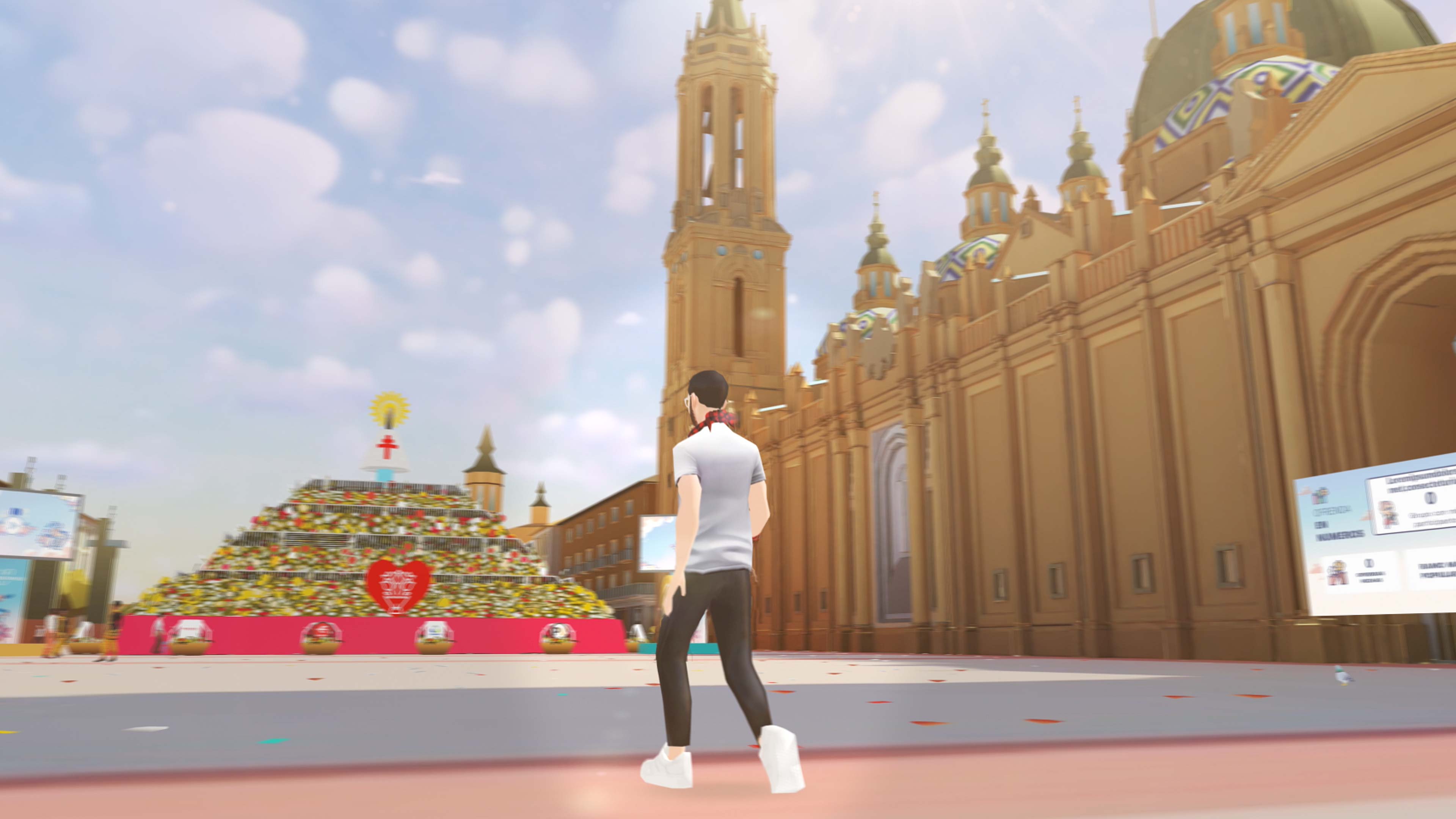
6. Marketing and advertising applications
Today, there are three key points that mark all marketing and advertising strategies: the emotion that the brand conveys to the public, the entertainment and differential that it offers and the interaction and initiative it awakens in the audience. Three pillars that the Virtual Events They manage to reach all users and points of the planet. In this type of events, the essence of the brand is transmitted in every detail, from the creation of the virtual world to the avatar customization y contents. Being able to organize press conferences at our own virtual auditorium, showrooms of the new services, 3D models of the latest products that will capture the public's attention. Among the actions that have already been launched are the presentation event of the Rafa Nadal Academy by Movistar in its press room at the Metaverse. About 100 accredited journalists from around the world had exclusive access to the presentation through their avatars and inside a virtual tennis court.

Advantages of Virtual Events
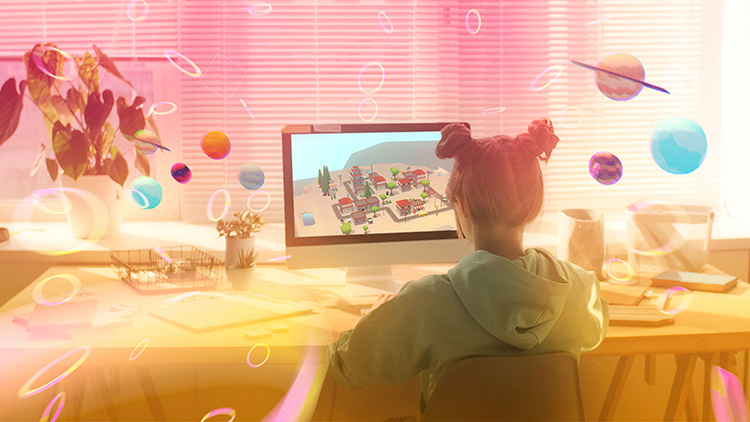
- Longer range
Thanks to its easy access y diffusion from different devices and points of the planet, the Virtual Events achieve a greater reach y public affluence. As there is neither a maximum number of attendees nor a time limit in this type of meetings, as in group video calls. It also allows to leave the event open to the public as long as it is considered.
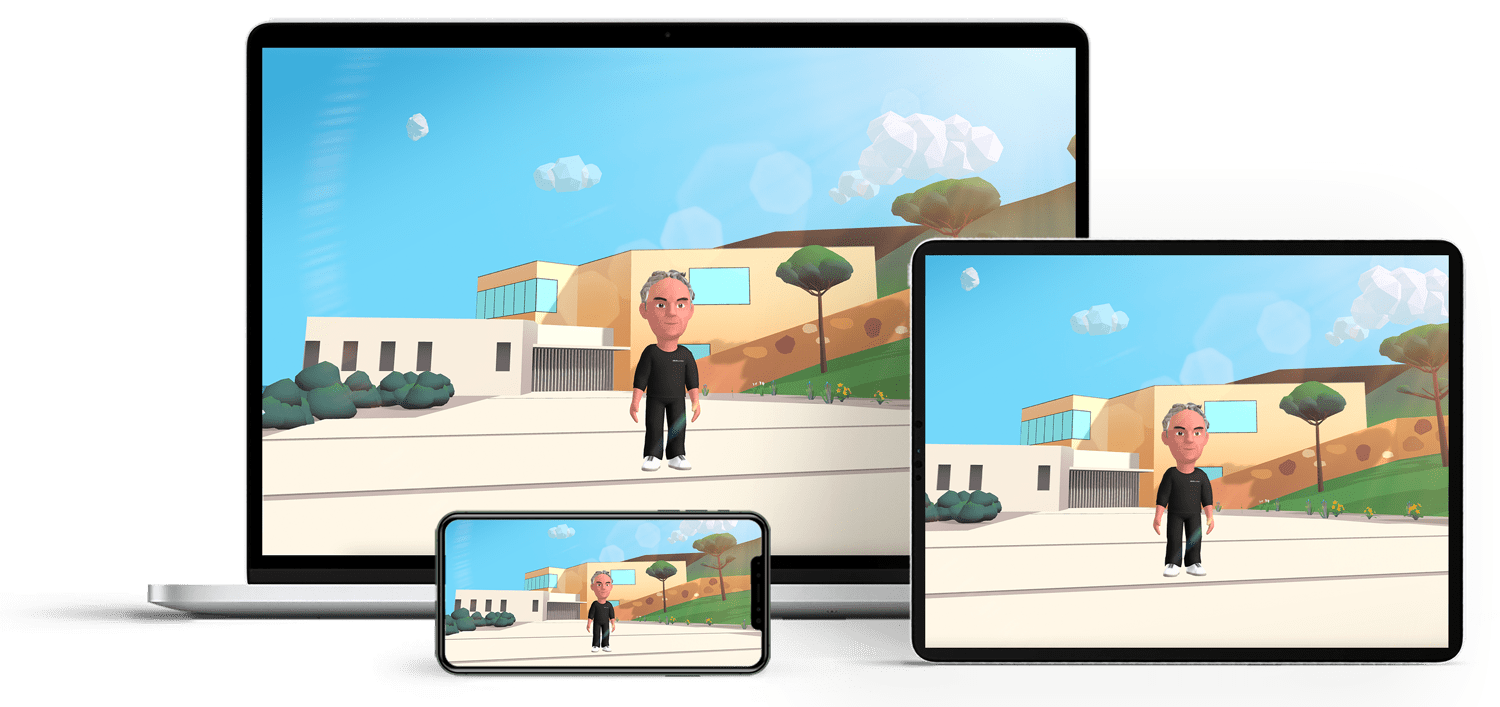
- Advanced analytics
If there is one element that only Virtual Events can offer compared to face-to-face events it is the greater control on the actions and reactions of the audience. Being able to register all their movements and times of permanence, places of origin, age, preferences. Access to a large number of data that could not be analyzed in person.

- Great versatility
The Virtual Events can be adapted to all types of companies, sectors and formats. Designing the spaces according to the thematic, essence y objectives of the brand. Customizing all the contents and activities to offer the final public a unique and different experience from what other more basic services can offer.
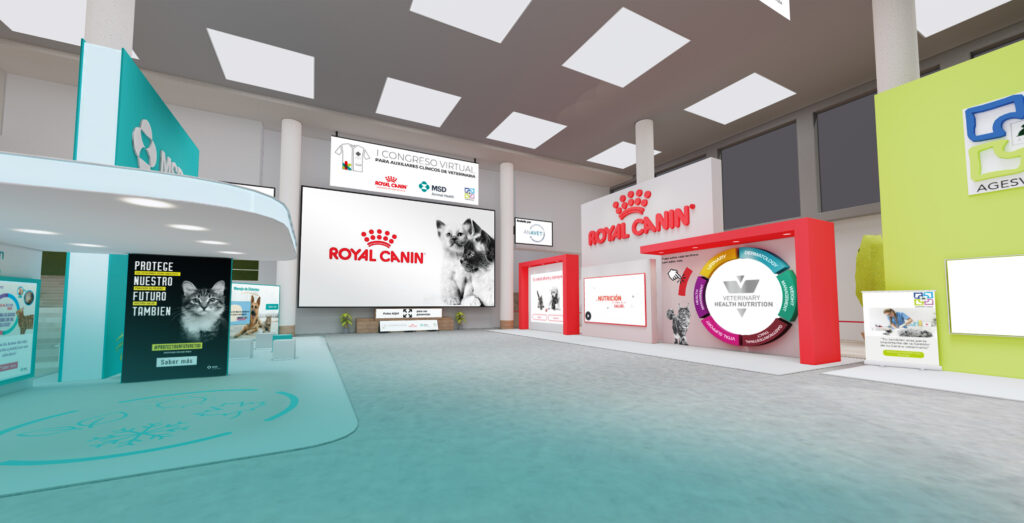
- Low cost
One of the great advantages of organizing Virtual Events is the possibility of meeting and interacting with hundreds of people from all over the world without having to pay for travel or booking large auditoriums. A fact that reduces costs and allows to allocate most of the resources to the most important thing: the quality of the event experience.
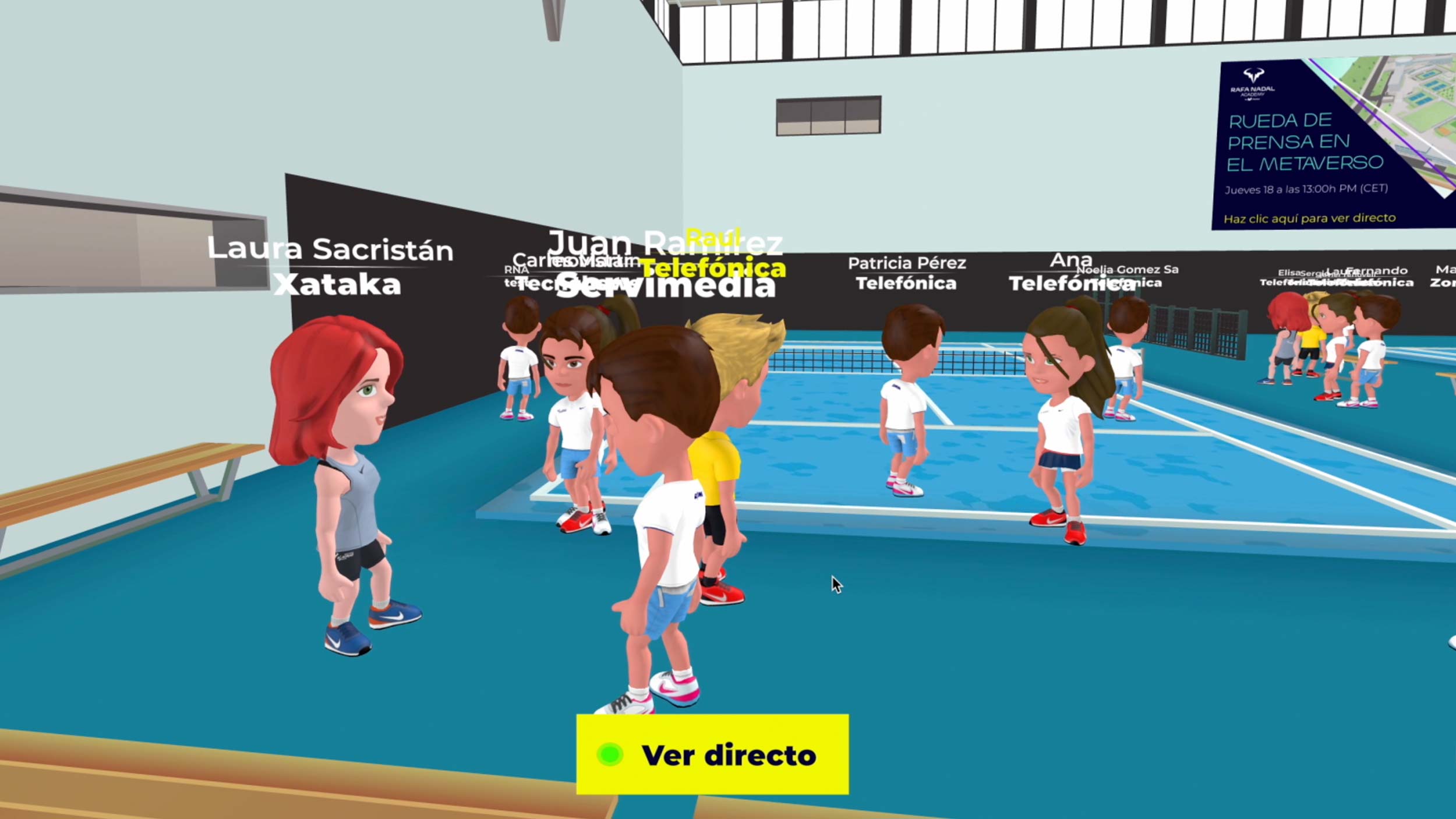
- Entertaining and proactive events
In this type of events, users can choose different ways to experience the experiencefreely exploring the 3D space without distractions. In addition, Virtual Events go beyond the simple online meeting through a video call. The gamification experience with different challenges, the interaction between users through the avatars and the construction from scratch of unique and engaging environments make virtual experiences much more engaging and participatory.
"The screen is the window through which we see the virtual world. The challenge is to make that world look real, act real, sound real and feel real."
- Ivan Sutherland, PhD in Computer Science from the Massachusetts Institute of Technology (MIT).


